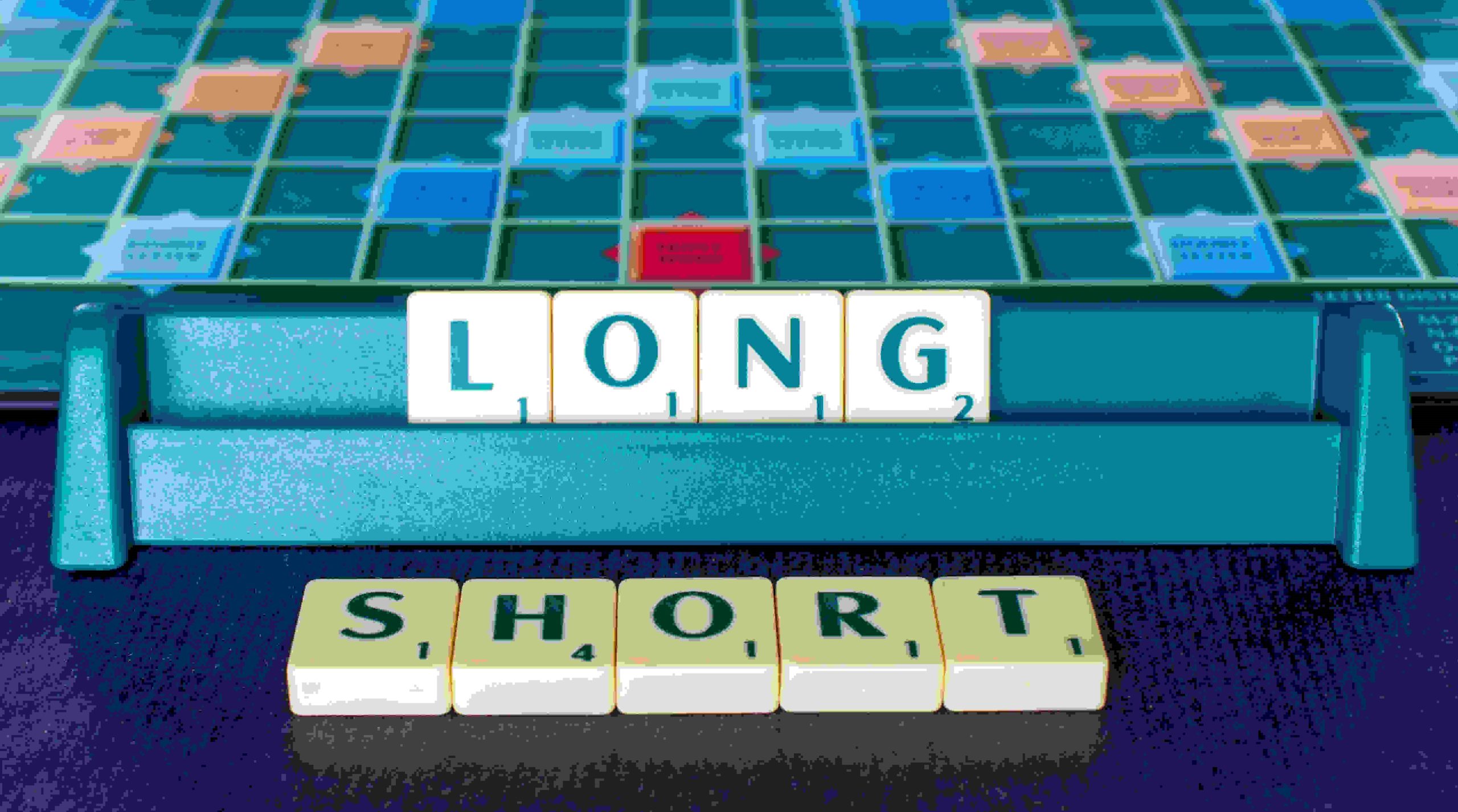
In this article, we will explore the key differences between a long trade and a short trade in the world of finance and investing. You will learn how these two types of trades differ in terms of market outlook, risk, profit potential, and the overall strategy involved. By the end of this article, you will have a clear understanding of the distinctions between long and short trades, and be better equipped to make informed decisions in your own investment journey.
Definition of Long Trade
Explanation of Long Trade
A long trade is a position in which an investor buys a security, such as a stock, currency, or commodity, with the expectation that its price will rise over time. In other words, when you go long, you are buying an asset, hoping that it will appreciate in value, and you will be able to sell it at a higher price to make a profit.
Long trades are typically held for an extended period of time, ranging from a few days to several months or even years. This strategy is based on the belief that the market will continue to grow and that the price of the asset will increase in the long run.
Benefits of Long Trade
There are several benefits to engaging in long trades. First and foremost, it allows you to take advantage of upward trends in the market. By buying an asset at a lower price and holding onto it as its value increases, you can make a significant profit.
Long trades also offer the advantage of allowing you to collect dividends or interest payments on certain assets, such as stocks or bonds. These payments can provide a steady income stream in addition to any potential capital gains.
Furthermore, long trades provide the opportunity to invest in companies or assets that you believe in and want to support. By holding onto these investments for the long term, you can contribute to their growth and success.
Definition of Short Trade
Explanation of Short Trade
A short trade is the opposite of a long trade. Instead of buying an asset in the hopes of its value increasing, a short trade involves selling an asset that you do not own, with the intention of buying it back at a lower price in the future.
When you engage in a short trade, you are essentially betting that the price of the asset will decline. This strategy is particularly useful in bearish markets or when there are clear signs of a downward trend.
Benefits of Short Trade
Short trades offer various benefits for investors. One of the biggest advantages is the ability to profit from a declining market. By selling an asset at a higher price and then buying it back at a lower price, you can make a profit from the price difference.
Short trades also provide the opportunity to diversify your portfolio and hedge against potential losses. When the overall market is showing signs of weakness, short trades can help offset any potential losses from your long positions.
Furthermore, short trades offer a higher potential for quick profits. In some cases, it may be possible to profit from a short trade within a matter of days or even hours, depending on the volatility of the asset.
Key Differences between Long and Short Trades
Timeframe
One of the key differences between long and short trades is the timeframe. Long trades are typically held for an extended period, ranging from months to years, while short trades are more short-term in nature, often lasting only a few days or weeks.
The longer timeframe associated with long trades allows investors to take advantage of the overall growth of the market and benefit from the compounding effect of their investments over time. On the other hand, short trades focus on capturing quick profits from short-term price movements.
Profit Potential
Long trades offer the potential for unlimited profits. As the market continues to grow and the value of the asset increases, your profits can continue to rise. However, there is also the risk of the asset’s value decreasing, resulting in potential losses.
In contrast, short trades have a limited profit potential. When you engage in a short trade, your profit is capped at the difference between the selling price and the buying price. This is because the price of an asset can only decline to zero, but it can theoretically increase indefinitely.
Risk Exposure
Long trades carry a certain level of risk. If the market does not perform as expected or if the value of the asset you invested in declines, you may incur losses. However, the risk of loss is limited to the amount you initially invested.
Short trades, on the other hand, expose investors to potentially unlimited risk. If the price of the asset being shorted increases, there is no limit to the potential losses. Consequently, short trades require careful risk management and monitoring of market conditions.
Market Direction
Long trades are typically entered into when the market is showing signs of growth or bullishness. Investors believe that the market will continue to rise and that the value of their investments will increase. Long trades are perceived as a way to take advantage of positive market conditions.
Short trades, on the other hand, are entered into during bearish markets or when there are clear signs of a downward trend. Investors expect the market to decline, and by selling the asset at a higher price and buying it back at a lower price, they aim to profit from the falling market.
Understanding Long Trades
Definition of Long Trades
Long trades involve buying an asset with the expectation that its value will rise over time. This strategy is based on the belief that the market will continue to grow and that the price of the asset will increase in the long run.
How to Enter a Long Trade
To enter a long trade, you need to follow a few steps. First, identify an asset that you believe has the potential for growth. This could be a stock, currency, commodity, or any other tradable asset.
Next, conduct thorough research on the asset and the market conditions. Analyze historical price data, news, and other relevant information to make an informed decision.
Once you have identified the asset and conducted your research, you can place a buy order through a brokerage or trading platform. Specify the quantity of the asset you want to purchase and the price at which you are willing to buy.
Finally, monitor the performance of your long trade and make any necessary adjustments. Keep an eye on market trends, news, and other factors that may impact the value of the asset.
Common Strategies for Long Trades
There are several common strategies that investors use when engaging in long trades. These include:
- Buy-and-Hold Strategy: This strategy involves buying an asset and holding onto it for an extended period of time, regardless of short-term fluctuations in price. The goal is to benefit from long-term growth and potential dividends or interest payments.
- Value Investing: Value investors look for undervalued assets that they believe have the potential for future growth. They focus on fundamental analysis and aim to buy assets below their intrinsic value.
- Growth Investing: Growth investors seek out assets that have the potential for significant growth in the future. They look for companies or sectors that are experiencing rapid expansion and invest in them with the expectation of substantial returns.
Understanding Short Trades
Definition of Short Trades
Short trades involve selling an asset that you do not own, with the intention of buying it back at a lower price in the future. This strategy is based on the expectation that the price of the asset will decline.
How to Enter a Short Trade
Entering a short trade involves a slightly different process compared to a long trade. Here are the steps involved in entering a short trade:
First, identify an asset that you believe is overvalued or will experience a decline in value. Conduct thorough research and analysis to support your hypothesis.
Next, borrow the asset from your broker or another investor. This involves engaging in a short sale transaction, where you sell the asset at the current market price.
Once you have sold the asset, you will have a short position. Monitor the market for a decline in the price of the asset and wait for an opportunity to buy it back at a lower price.
Finally, when the price of the asset has declined, buy it back in the market and return it to your broker or the investor you borrowed it from. The difference between the selling price and the buying price represents your profit from the short trade.
Common Strategies for Short Trades
There are several common strategies that investors use when engaging in short trades. These include:
- Short Selling: This is the most common strategy for short trades. It involves selling an asset that you do not own and buying it back at a lower price to profit from the decline. Short selling can be used for individual stocks, commodities, currencies, and other tradable assets.
- Pairs Trading: Pairs trading involves identifying two correlated assets and taking opposite positions in them. For example, if you believe that one stock will outperform another, you can short sell the underperforming stock while going long on the outperforming one. This strategy allows you to profit from the relative performance of the two assets.
- Swing Trading: Swing traders aim to capture short-term price movements in the market. They typically hold their positions for a few days to weeks and take advantage of both upward and downward swings.
Factors to Consider when Choosing Between Long and Short Trades
Market Conditions
One of the most important factors to consider when choosing between long and short trades is the current market conditions. If the market is bullish and showing signs of growth, long trades may be more favorable. On the other hand, if the market is bearish or volatile, short trades may be more suitable.
Investment Goals
Investment goals also play a crucial role in determining whether to engage in long or short trades. If you have a long-term investment horizon and are looking for steady growth and potential income, long trades may be more appropriate. However, if you are seeking quick profits and have a higher risk tolerance, short trades may be more appealing.
Risk Tolerance
Your risk tolerance is another important factor to consider. Long trades generally carry less risk compared to short trades since losses are limited to the initial investment. Short trades expose investors to potentially unlimited losses if the market moves against them. Therefore, it is important to assess your risk tolerance before deciding which strategy to pursue.
Practical Examples of Long and Short Trades
Real-life Long Trade Example
Let’s say you are interested in investing in ABC Company, a tech company that you believe has a promising future. After conducting thorough research and analysis, you decide to go long on ABC Company by purchasing its shares at $50 per share.
Over the next few months, the price of ABC Company’s shares steadily increases due to positive earnings reports and strong market demand. Eventually, the price reaches $80 per share. At this point, you decide to sell your shares and realize a profit of $30 per share.
Real-life Short Trade Example
In a different scenario, let’s say you notice that XYZ Company, a competitor of ABC Company, is facing financial difficulties and is likely to experience a decline in its stock price. You decide to engage in a short trade by borrowing shares of XYZ Company from your broker and selling them at the current market price of $100 per share.
As predicted, XYZ Company’s stock price begins to decline due to poor earnings and negative news. You monitor the market closely and eventually buy back the shares at $60 per share. By returning the borrowed shares to your broker, you realize a profit of $40 per share.
Advantages and Disadvantages of Long and Short Trades
Advantages of Long Trades
- The potential for unlimited profits as the market continues to grow
- The opportunity to earn dividends or interest payments
- The ability to support companies or assets you believe in
- The advantage of compounding returns over time
Disadvantages of Long Trades
- The risk of losses if the market does not perform as expected
- Limited profit potential compared to short trades
- The need for patience and long-term commitment
Advantages of Short Trades
- The potential for quick profits during market declines
- The ability to hedge against potential losses in long positions
- The opportunity to diversify a portfolio
- The advantage of taking advantage of bearish market conditions
Disadvantages of Short Trades
- The exposure to potentially unlimited losses
- The need for careful risk management and monitoring of market conditions
- The requirement to borrow assets, which may come with additional fees or restrictions
Role of Long and Short Trades in Investment Strategies
Long Trades in Investment Strategies
Long trades play a vital role in most investment strategies. They provide opportunities for growth, income, and long-term wealth accumulation. By investing in assets that you believe in and holding onto them for an extended period, you can benefit from the overall growth of the market and potentially earn dividends or interest.
Short Trades in Investment Strategies
Short trades are particularly useful in bearish or volatile markets and can help investors hedge against potential losses in their long positions. They offer quick profit opportunities and allow investors to profit from declining asset prices. Short trades can provide diversification and enable investors to take advantage of both bullish and bearish market conditions.
Conclusion
In conclusion, the key difference between a long and short trade lies in the expectation of the price movement. Long trades involve buying an asset with the expectation that its value will increase, while short trades involve selling an asset with the expectation that its value will decrease.
Long trades are typically held for an extended period, offer the potential for unlimited profits, and expose investors to market growth. Short trades, on the other hand, are more short-term in nature, offer the potential for quick profits, and allow investors to profit from declining markets.
When choosing between long and short trades, it is important to consider factors such as market conditions, investment goals, and risk tolerance. Both strategies have advantages and disadvantages, and their role in investment strategies can vary depending on individual preferences and market conditions.
Understanding the difference between long and short trades is essential for any investor. By comprehending these concepts, you can make informed investment decisions and maximize your potential profits while managing risk effectively.








